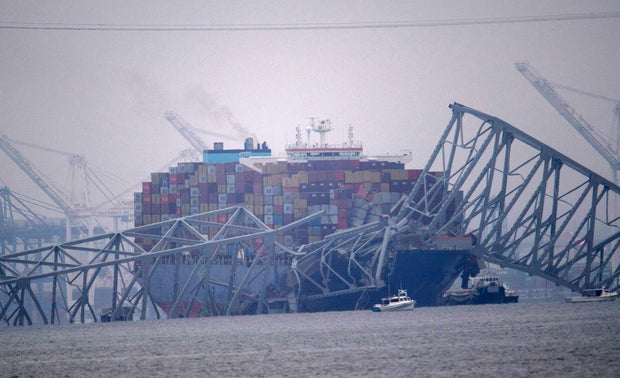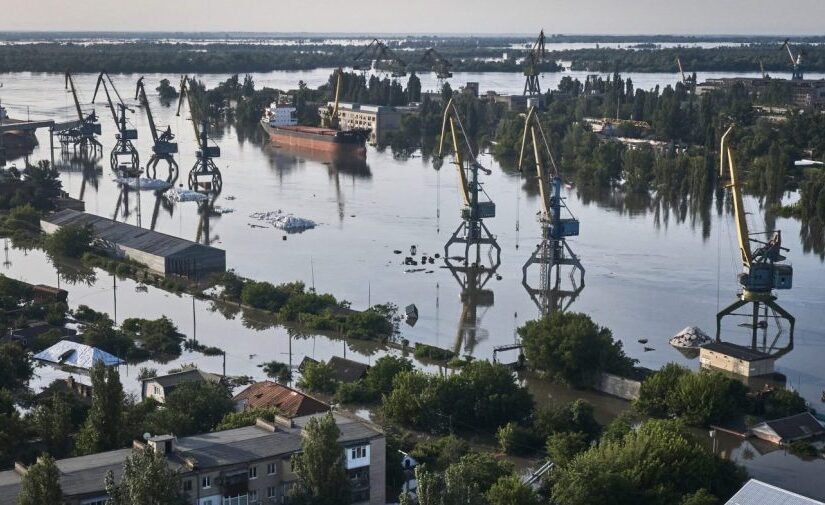In the wake of the collapse of the Francis Scott Key Bridge, which plunged into the Patapsco River in Maryland after the cargo ship Dali slammed into one of its support columns, CBS News has learned a majority of bridges in the U.S. lack any form of impact protection.
Accidents like the one that destroyed the 47-year-old Baltimore bridge aren’t new. A similar collision in 1980 at the Sunshine Skyway Bridge over Tampa Bay killed 35 people. After that incident, codes changed and all bridges built after 1991 were required to have increased protection.
Structures called fenders and dolphins — which absorb impact, similar to the bumper on a car — are some of the methods used to keep bridges safe.
Jackie Green / AP
But the Key Bridge was built in the 1970s, so meeting the current code would require retrofits and upgrades, retired bridge engineer Andy Herrmann said.
“They would either harden the piers so they could take an impact or put a fender, a system of substantial configuration, to deflect that vessel back into the navigable channel,” Herrmann told CBS News. “Or they might do what they did at Sunshine Skyway: Put an island in front of it.”
There are 4,207 bridges in the U.S. that allow ships to pass under them, according to the National Bridge Inventory. Of those, only 36% are described as having functional pier protection — and that included the Key Bridge.
The inventory does not provide specifics about the bridges’ protection or whether they could withstand an impact like Tuesday’s crash in Baltimore, in which a 984-foot, 116,000-ton cargo ship struck a bridge support column. The NTSB said the Dali had been slowing down from about 7 knots (roughly 8 mph) shortly before the impact.
“I was shocked when I saw how that bridge was impacted by the vessel,” said Jim Salmon of the Delaware River and Bay Authority.
Jonathan Newton for The Washington Post via Getty Images
Salmon said Delaware is working to avoid a similar tragedy, spending $95 million installing up-to-date protections on the Delaware Memorial Bridge, a dual-span suspension bridge over the Delaware River that connects Delaware and New Jersey and provides a key link between sections of Interstate 95. An application for the upgrades characterized the existing system as “outdated and inadequate to protect the bridge from collisions with the larger and modern vessels.”
Salmon said the improvements, which include new dolphin cells, “protect our tower structures” should a ship lose steering in an incident similar to the Key Bridge allision.
“It’s what I would call our insurance policy,” Salmon said. “You don’t want to spend $95 million, and have it sitting in the water. You say it’s a lot of money, but like an insurance policy, if something goes wrong, you want to have your insurance there, and that’s our insurance.”
Once the project is completed, the bridge will be protected from ships even larger and faster than Dali — hauling up to 156,000 tons and moving at 7 knots.
Structural engineer Matthew Roblez said he was surprised there wasn’t a fender system to protect the Key Bridge. He believes if one had been installed around or in front of the piers, Tuesday’s crash would have been less catastrophic.
Roblez believes there probably wasn’t much that could have been done to completely prevent the Key Bridge collision, but protective systems could have “dissipated the kinetic energy.”
Part of the NTSB investigation into the collision and collapse will examine the structure of the Key Bridge.
NTSB Chair Jennifer Homendy cited data from the Federal Highway Administration which shows of about 615,000 bridges in the United States, 17,468 are “fracture critical.” That means if one piece of the bridge support fails, the whole bridge comes down.
So, the question remains: Four decades after the Tampa bridge collapse, will this latest disaster prompt the federal government to require updated protections for older bridges?


